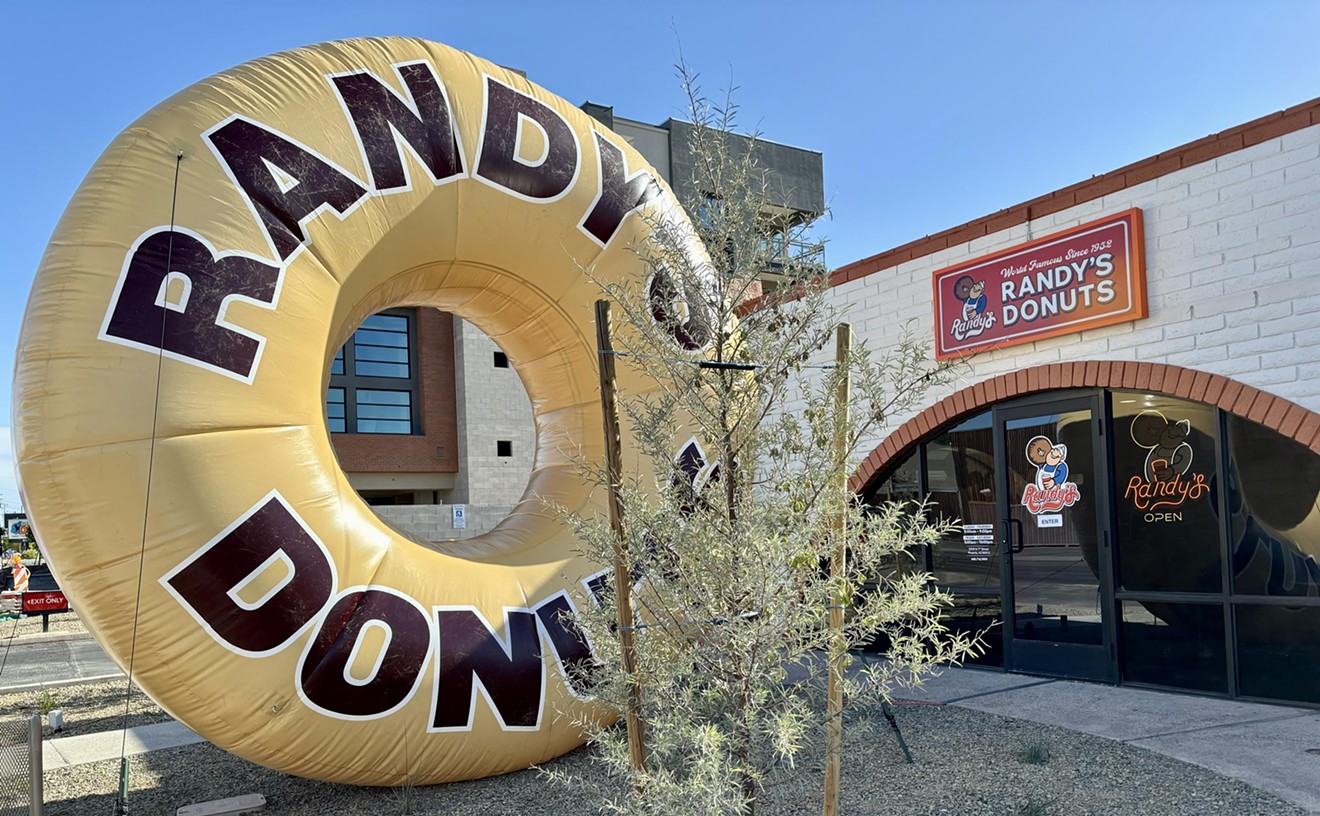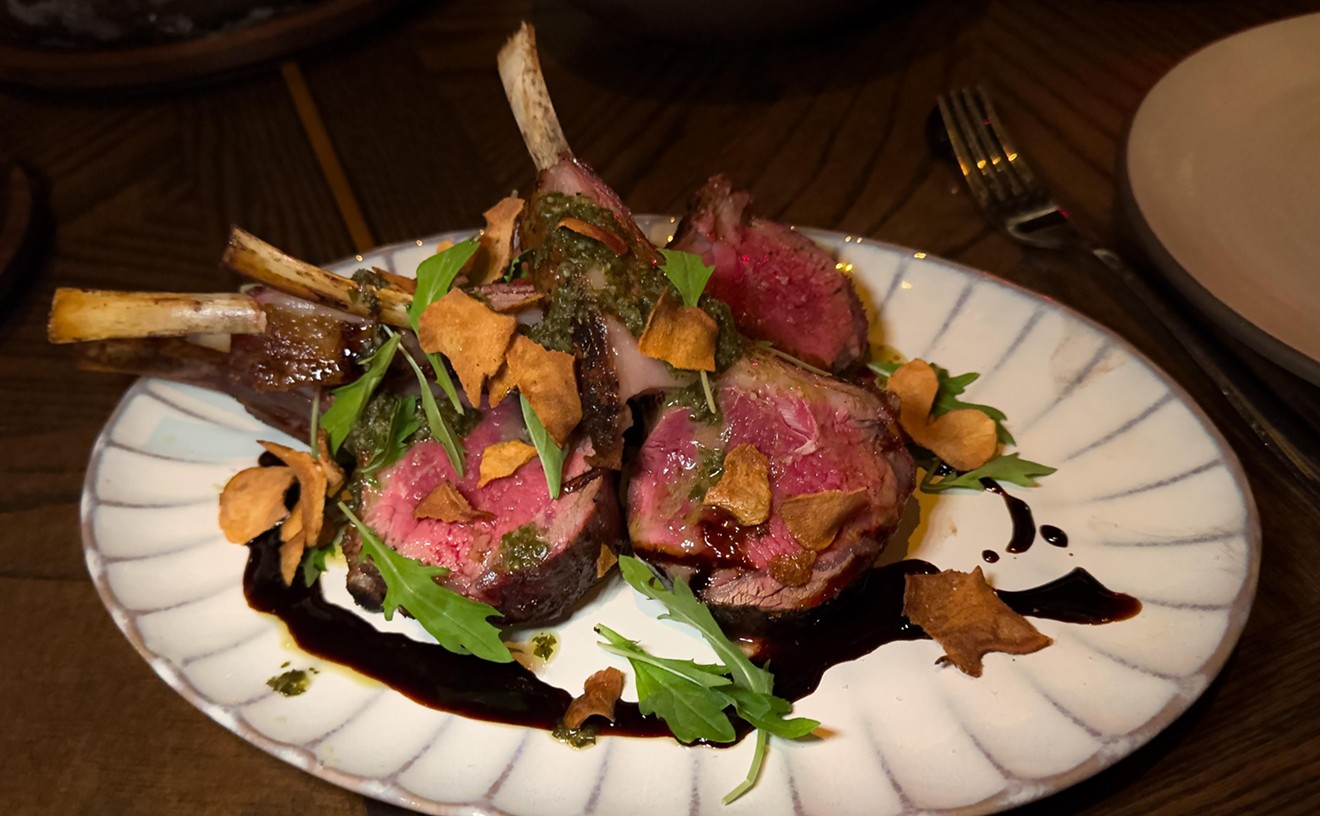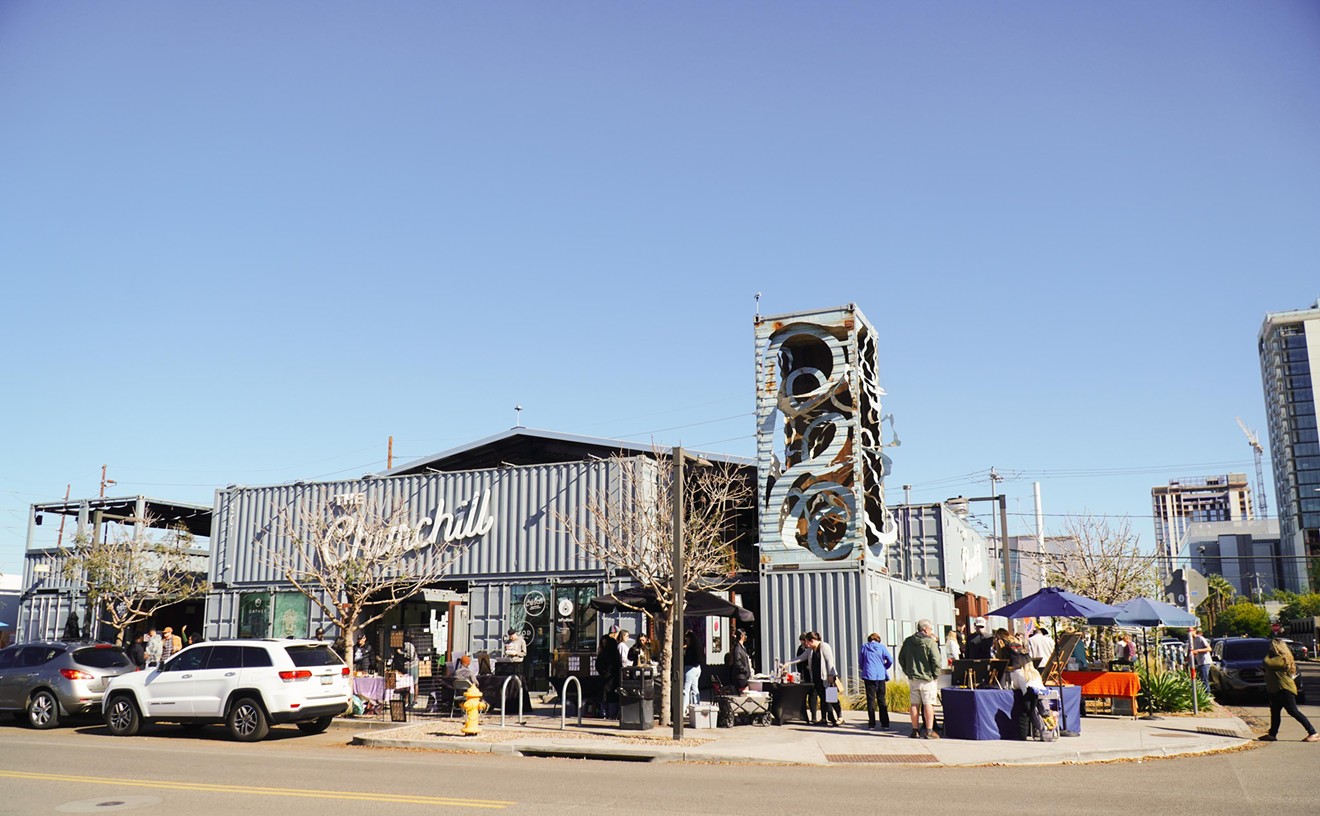Welcome to Grind, a reoccurring series about coffee and coffee culture in metro Phoenix written by local barista and coffee expert Bill Kennedy. Kennedy started his career at Ground Control in Goodyear and served as Director of Education for Cartel Coffee Lab before landing his current gig as Director of Coffee at Futuro in downtown Phoenix. For more about Kennedy and his experience in the coffee industry, check out our interview from earlier this year.
Does your morning ritual involve sleepwalking into the kitchen, throwing some arbitrary amount of pre-ground coffee and tap water into a thrift-store Mr. Coffee, and just hoping for the best? Well, don't worry, you're not alone. Whether you do this because of a sense of tradition or the result of early-morning inertia, I’m here to tell you that even though making bad coffee is definitely easier than making good coffee, there are five (relatively) simple ways you can transform your morning cup from serviceable to gourmet.
1. Use Better Water
Brewed coffee is made up of two ingredients: ground coffee and water. Of the two, water makes up the vast majority (more than 98 percent) of the beverage. Water is also responsible for all the heavy lifting during the brewing process. Clean water that tastes good on its own is essential — just make sure it isn’t too pure, as some minerals are necessary for proper extraction. The proper range is 50 to 150 total dissolved solids, or TDS.
Charcoal filters (a popular brand is Brita) are fine in some parts of this country, where the tap water is already naturally soft. But here in Arizona, our tap water is way too mineral-heavy. The best solution is to buy certain brands of spring water, such as Arrowhead, which generally have the right mineral content. You can also buy gallons of drinking water, which are super-purified (sub 30 TDS), and do a mix of ¾ drinking water to ¼ tap water in order to reach the proper mineral range (again, 50-150 TDS). If you want to be certain you’re on target, a TDS meter will run you $20 on Amazon.
2. Use Better Coffee
While some grocery stores carry specialty coffee (one of the industry’s pioneering brands, Intelligentsia, is sold at AJ’s and select Target locations), the vast majority of coffee sold in mainstream stores is stale, over-roasted, and of poor quality.
Coffee begins its life as a cherry of a shrub, in places as far flung as Ethiopia and Colombia. Coffee beans are actually the roasted seed of this cherry, but in order for this seed to yield a tasty beverage, coffee cherries must be harvested with the precision and care shown to the grapes of the world’s best wines. Like quality-focused winemakers, great coffee roasters deal only in the best cherries.
That’s where most of the coffee sold in supermarkets goes wrong: The cherries are either under or over-ripe, or get comprised during their long journey to the roaster. The other problem has to do with roasting itself: in order to cover up growing-related defects, as well as to give their product a uniform flavor, big coffee brands roast the raw seeds far too dark. Even the lightest roasts sold by biggest brands have had all the flavor burned out of them.
Buying coffee from one of the many shops around town is the way to go. The few local roasters doing it right include Press in Scottsdale, Cartel in Tempe, and Presta in Tucson. Plenty of prestigious national roasters are also available. Phoenicians can grab 49th Parallel (Vancouver, British Columbia) at Futuro. In Scottsdale, Maverick stocks Ritual (San Francisco). In Tempe, Crepe Bar carries Heart (Portland, Oregon).
What all these roasteries have in common is the ever-elusive goal of roasting well-grown coffee dark enough to be consumable (raw coffee is too dense to be ground and tastes like grass), while not covering up the amazing complexity inherent within.
3. Grind Your Coffee at Home
Although the places mentioned above will grind your coffee for you, resist the urge. Grinding coffee immediately before you brew ensures all those aromatics and flavors end up in your mug, and not floating in the air around your kitchen.
Avoid blade grinders at all costs. They chop and slice coffee beans, leading to different-size particles. The smallest of these particles get over-extracted, leading to bitter flavors; the bigger chunks get under-extracted, making your morning cup weak and sour.
Burr grinders are much better since they crush beans in a more uniform manner, insuring a more even extraction. Prices vary; the cheapest are hand-powered, like the Hario Skerton ($30). For more horsepower, the Baratza Encore ($125) is a great entry-level model.
The majority of coffee roasters sell grinders on their websites along with their beans. If you prefer to patronize a brick-and-mortar establishment, check out the retail shelves at Cartel and Press.
4. Use a Scale
Weighing coffee in grams, using a digital scale, allows you to do away with all those messy and inaccurate scoops and cups and focus on the task at hand. Scales are sold Amazon for as low as $15.
Or you can take a real plunge into coffee nerd-dom with a Hario V60 scale ($60), which also has a built-in timer. Besides how finely you grind your coffee and how much you use per brew, time is the other great factor in the quality and strength of what’s in your cup. Brew for too long and your coffee will be over-extracted and bitter. Brew for too short and your coffee will be under-extracted and watery.
Weighing your water in grams increases your accuracy as well, with the added bonus of making the math of establishing a proper water to coffee ratio much simpler. A good place to start is 16 grams (or milliliters) of water to 1 gram of coffee.
5. Upgrade Your Brewer
Mr. Coffee is the brand of coffee brewer with which you’re probably the most familiar. Which is sad, since they fail to heat the water to a sufficient temperature (over 200°) and pour it evenly over ground coffee. Some models of automatic brewers right the wrongs stated above, such as the Bonavita BV1900TS ($189).
Manual brewers are a better bet for the budget-conscious, in addition to allowing the user a more hands-on experience.
The Hario V60 ($20), my personal favorite, works very much like the automatic brewers discussed above, except you’re in charge of pouring the water over the bed of coffee, where the two mingle briefly (called a slurry) and result in — hopefully — delicious coffee. A medium-fine grind helps to maximize the coffee and water’s interaction time, preferably 2-3 minutes for batches under 30 grams, 4-5 minutes for anything bigger. Another way to slow down this interaction is to slow the rate at which you pour the water. Goose-neck kettles, such as the kind sold by Hario ($50), have specially-shaped spouts that give the pourer an amount of control not possible with regular hot-water kettles. When it comes to temperature, water just shy of boiling is best; anything cooler and the slurry temperature will fall below the mandatory 200 degrees.
[
{
"name": "Air - MediumRectangle - Inline Content - Mobile Display Size",
"component": "18478561",
"insertPoint": "2",
"requiredCountToDisplay": "2"
},{
"name": "Editor Picks",
"component": "16759093",
"insertPoint": "4",
"requiredCountToDisplay": "1"
},{
"name": "Inline Links",
"component": "17980324",
"insertPoint": "8th",
"startingPoint": 8,
"requiredCountToDisplay": "7",
"maxInsertions": 25
},{
"name": "Air - MediumRectangle - Combo - Inline Content",
"component": "16759092",
"insertPoint": "8th",
"startingPoint": 8,
"requiredCountToDisplay": "7",
"maxInsertions": 25
},{
"name": "Inline Links",
"component": "17980324",
"insertPoint": "8th",
"startingPoint": 12,
"requiredCountToDisplay": "11",
"maxInsertions": 24
},{
"name": "Air - Leaderboard Tower - Combo - Inline Content",
"component": "16759094",
"insertPoint": "8th",
"startingPoint": 12,
"requiredCountToDisplay": "11",
"maxInsertions": 24
}
]










